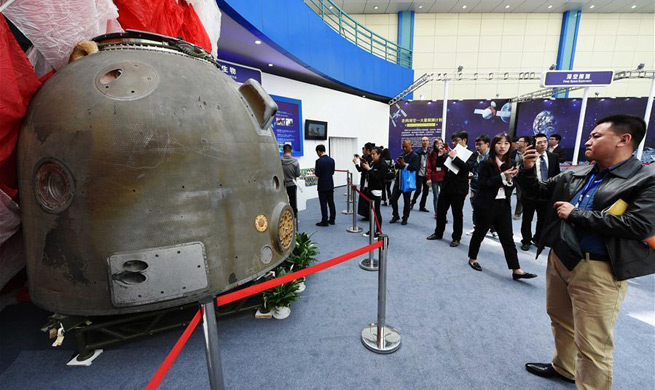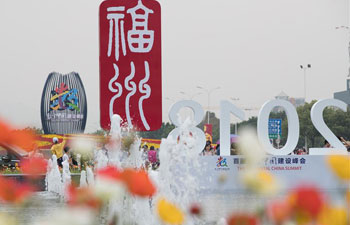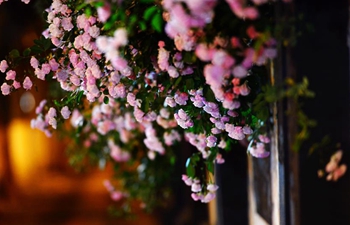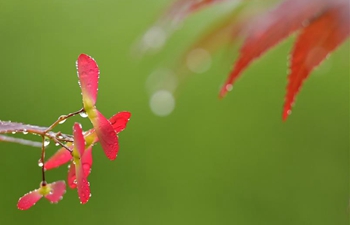WASHINGTON, April 24 (Xinhua) -- Chinese researchers reported on Tuesday in the journal Molecular Plant a high-quality draft genome sequence of Artemisia annua, a Chinese shrub producing a potent antimalarial compound Artemisinin and a way to extract more antimalarial medicine from the plant.
The findings can be used to metabolically engineer plant lines that produce higher levels of artemisinin as the low amount of artemisinin produced in the leaves of this sweet wormwood does not meet the global demand.
"Nearly half of the world's population is at risk of malaria," said senior study author Tang Kexuan with Shanghai Jiao Tong University. "Our strategy for the large-scale production of artemisinin will meet the increasing demand for this medicinal compound and help address this global health problem."
According to the World Health Organization, malaria affected approximately 216 million people in 91 countries in 2016 and caused an estimated 445,000 deaths worldwide that year alone.
The best available treatment for malaria is artemisinin-based combination therapy. In addition to its antimalarial activity, therapeutic effects of artemisinin have been reported for cancer, tuberculosis, and diabetes.
However, the supply of artemisinin is limited because this medicinal compound typically makes up only 0.1 percent to 1.0 percent of the dry weight of Artemisia annua leaves.
FINDING PROTEIN-CODING GENES
To fully harness this compound's therapeutic potential, researchers have developed metabolic engineering strategies aimed at enhancing the expression of artemisinin biosynthetic pathway genes.
These efforts failed to generate Artemisia annua lines that produced high levels of artemisinin, though, primarily because they focused on modifying gene expression only upstream or downstream of the artemisinin biosynthetic pathway.
A major hurdle for metabolic engineering strategies has been the lack of reference genome sequences and limited information about the genes involved in regulating artemisinin biosynthesis.
Tang and his collaborators generated a high-quality draft assembly of the 1.74 gigabase Artemisia annua genome, which contains 63,226 protein-coding genes, one of the largest numbers among sequenced plant species.
It took several years to complete the genome sequence due to its large size and high complexity.
The study added a wealth of information about Asteraceae, one of the largest families of plants consisting of more than 23,600 species of herbs, shrubs, and trees distributed throughout the world, including many with considerable medicinal, ornamental, and economic importance.
"A major impediment to the exploitation of the Asteraceae resources in basic and breeding sciences has been the absence of reference genome sequences; to date, only the sunflower and chrysanthemum genomes have been released," Tang said.
"The Artemisia annua genome and transcriptome data we provide here will be a valuable asset for fundamental biological research on plant evolution and other topics as well as applied breeding programs," Tang said.
EXTRACTING MORE MEDICINE
The Artemisia annua genome sequence provided new insights into the entire metabolic pathway involved in artemisinin biosynthesis. Analysis of the protein-coding genes and gene expression patterns revealed the regulatory networks underlying artemisinin biosynthesis.
Based on the genomic and transcriptomic data, the researchers identified novel genes involved in regulating artemisinin biosynthesis. By simultaneously increasing the activity of three genes, namely HMGR, FPS, and DBR2, spanning the entire artemisinin biosynthetic pathway, the researchers generated Artemisia annua lines that produced high artemisinin levels, 3.2 percent of the dry weight of the leaves.
Leveraging these findings, Tang and his team have sent artemisinin-rich seed samples to Madagascar, the African country that grows the most Artemisia annua, for a field trial.
"We hope our research can enhance the global supply of artemisinin and lower the price from the plant source," Tang said.

















